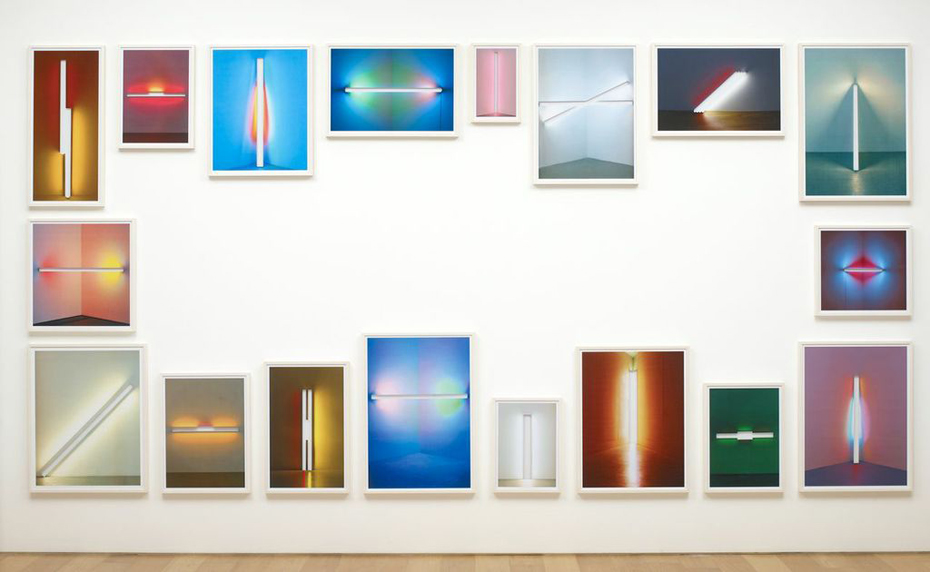The Mexican artist explores the argument of Flavin’s fluorescent light tubes in his exhibition at Max Wigram Gallery
One of the chief problems of a young artist’s life is sufficiently digesting one’s influences. Even some of the greats never quite get over this kind of unintentional mannerism. I can’t help thinking every time I see an Arshile Gorky that we would have been better if he was just shipped off to a desert island somewhere and not allowed to visit museums (granted, all his works would probably look like Gaugin’s if he did so, but it’s the kind of thought experiment that keeps your mind going in the vast netherworld that exists between Edgware Road and Baker Street on the Hammersmith and City Line). One way to erase one’s influences is simply to erase one’s influences, an approach famously undertaken by Robert Rauschenberg when he erased a drawing by Willem DeKooning and claimed the erasure as his creation. So where does that leave Jose Dávila, the artist behind the show Shadow as Rumour at Max Wigram Gallery? In the show Dávila displays a number of prints of Dan Flavin light pieces from which Dávila has cut the central image of Flavin’s florescent light tubes.
There are those perverse art critics who would say the work is actually referencing Rauschenberg more than it is Flavin, but it is perhaps the nature of Flavin’s work that makes Dávila’s pieces more than mere technical homage or Oedipal cry-for-idea-help. In a sense Flavin’s works were only ever partly about the light tubes themselves.The tension between the mass produced form and its individualised neon contents were what made Flavin’s work a new outpost in the explorations of the art world after Post-Painterly Abstraction. The actual visual residue of the emitted light in a space was important; by presenting the space alone with the light residue, Dávila manages to not only destabilise the foreground/background relations in the prints, but to actually to make Flavin’s argument a bit more tangible: all painting is about light, all seeing is about light.
The prints are carefully hung and establish a dialogue with a large steel sculpture in the centre of the room. The dynamic between the negative space of the prints and the presence of the sculpture, composed of little bars of colour joined up is quite tightly articulated. The structure isn’t quite the exact, steel reification of the missing Flavin tubes, but it’s close enough that you want to keep looking for them, and maybe that’s something what Dávila is trying to say, once an art work gets into your head, you start seeing it everywhere. It’s not the disruption of context, it is context.
Jose Dávila: Shadow as Rumour runs until 13 June at Max Wigram Gallery, 106 New Bond Street,London W1S 1DN




